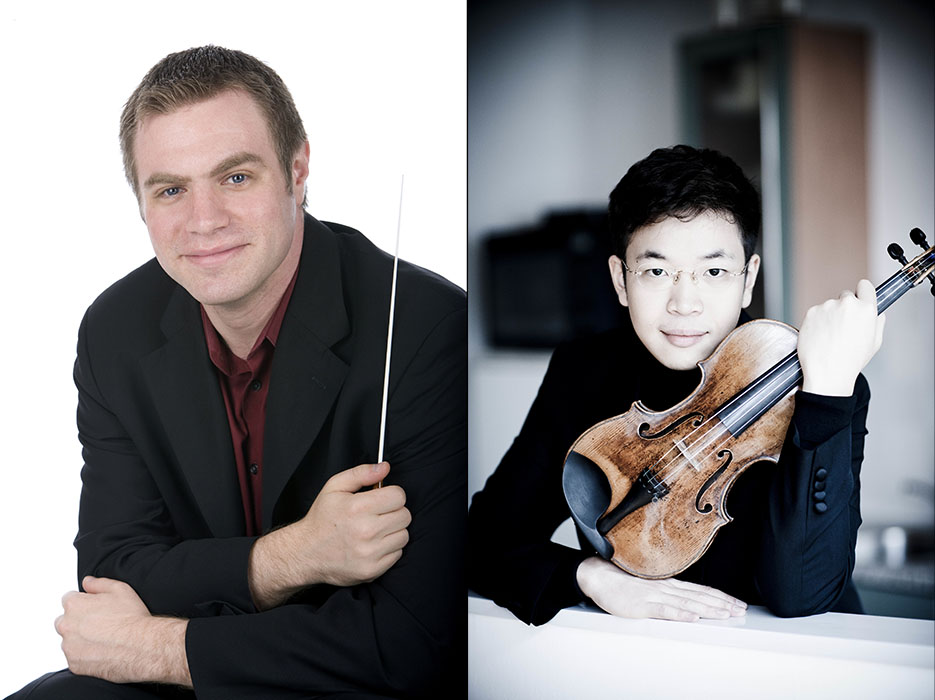Knoxville Symphony Orchestra Masterworks: “Beethoven Violin Concerto”
Guest conductor: Joshua Gersen
Guest violinist: Paul Huang
Beethoven: Concerto for Violin and Orchestra in D Major
Richard Strauss: Tod und Verklärung (Death and Transfiguration)
Tchaikovsky: Romeo & Juliet Overture-Fantasy
7:30 PM, Thursday and Friday, November 16 and 17
Tennessee Theatre, 604 S. Gay Street
Tickets
One thing Knoxville audiences learned in the Knoxville Symphony Orchestra’s conductor search that resulted in its new music director, Aram Demirjian, is that the orchestra has become quite adept at adjusting to and supporting guest conductors with remarkably effective results. While Maestro Demirjian is away in November and December fulfilling commitments to the Omaha Symphony and the Philadelphia Orchestra, the orchestra will get the opportunity to demonstrate this ability once again.
For the Masterworks pair of concerts on Thursday and Friday, November 16 and 17, the baton goes to Joshua Gersen, who will take over the preparation of the pre-Thanksgiving musical feast that consists of works by Beethoven, Richard Strauss, and Tchaikovsky. By association alone, Gersen is an interesting choice for both the orchestra and the audience. He is currently the Assistant Conductor of the New York Philharmonic, as well as the Music Director of the New York Youth Symphony.
Apparently, Gersen is equally adept at making adjustments to new situations. Last February, the conductor received a trial by fire at the NYPhil when guest conductor Semyon Bychkov fell ill during afternoon rehearsals, requiring Gersen to finish the rehearsal and conduct the evening’s performance a few hours later—a performance that included Tchaikovsky’s symphonic poem Francesca da Rimini and Tchaikovsky’s “Pathétique” Symphony.
The Tchaikovsky on the KSO’s program is another tone poem, the Romeo & Juliet Overture-Fantasy.
Joining Gersen and the orchestra for Beethoven’s Concerto for Violin and Orchestra in D Major is the 27-year old violinist, Paul Huang. Over the last several years, Huang has made a substantial name for himself not only in concert appearances, but also in recitals and an association with the Chamber Music Society of Lincoln Center that continues next month with performances in China and Taiwan. Huang received Bachelors and Masters degrees from the Juilliard School, studying under Hyo Kang and I-Hao Lee. His performance violin is the 1742 ex-Wieniawski Guarneri del Gesù on loan through the Stradivari Society of Chicago.
When Richard Strauss began work on his third tone poem in 1888, the 24-year old composer already had a substantial reputation from his second, Don Juan. Tod und Verklärung (Death and Transfiguration) premiered in Eisenach two years later, with the printed program carrying an anonymous poem that was intended to be illustrative of the musical narrative. The poet was later revealed to be Strauss’ friend, Alexander von Ritter. The poem was expanded by Ritter into a complete musical/dramatic guide to accompany the published edition of the score. The poem and score are in four parts although the music is continuous.
I. Largo (Sleep, Illness, and Reverie)
II. Allegro molto agitato (Fever and Struggle with Death)
III. Meno mosso, ma sempre alla breve (Dreams, Childhood Memories, and Death)
IV. Moderato (Transfiguration)
In a 1916 book on then-modern composers, critic and composer Daniel Gregory Mason offered this on Strauss’ ability as a tone painter:
“Superlatives are dangerous, but probably no other musician has ever carried to such a point the power of music to depict, or at least to suggest, varieties of character, both in human beings and in in animate objects.”







